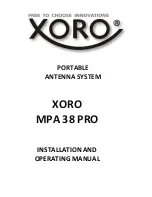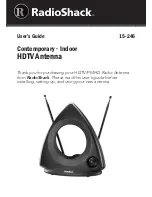
Operation | 8
2 Operation
General
This manual covers the MX521, MX521A and MX521B
antenna models and will be generally called MX521. The
MX521 and MX521A antenna models are D/GPS smart
antenna sensor while the MX521B is a combined DGPS/
GLONASS smart antenna sensor. They are fully automatic
and do not require initialization or user intervention. They
will automatically search for available satellites and make a
position fix shortly after power is applied.
The internal 2-channel beacon receiver, in the DGPS
version, initiates an Auto-matic Beacon Search (ABS) on
power on. The primary channel will lock-on to the nearest
beacon station, while the second channel searches for
other available beacon signals. Should it find a superior
signal, it will automatically switch the primary channel to
the new station.
The beacon receiver can be controlled by a Control Display
Unit (CDU) like the MX420, MX500, MX51x, GN70 or MX61x
series, to operate in Automatic Beacon Search, Manual
Tune or Database modes. The Database mode allows the
beacon receiver to store the almanac of 10 stations that
are closest to its present position. This feature complies
with the IEC 61108-4 specifications. The combined
performance of the high-precision GPS and GPS/GLONASS
receivers and 2-channel smart beacon receiver provides a
more accurate position fix, usually within 1 meter or less.
Satellite Based Augmentation System
(SBAS)
In areas where land-based Coast Guard beacon stations
are not available, the MX521 can be controlled to track
the Satellite Based Augmentation Systems (SBAS) like
the WAAS (US), EGNOS (European) and MSAS (Japan)
satellites. These satellites transmit DGPS correction data
(just like the Coast Guard stations) using the same GPS
frequency of 1575.00 MHz. Refer to the MX CDU Operator
Manual for more details. Turning this feature on in the
MX CDU will initiate the MX521 to listen for and track any











































